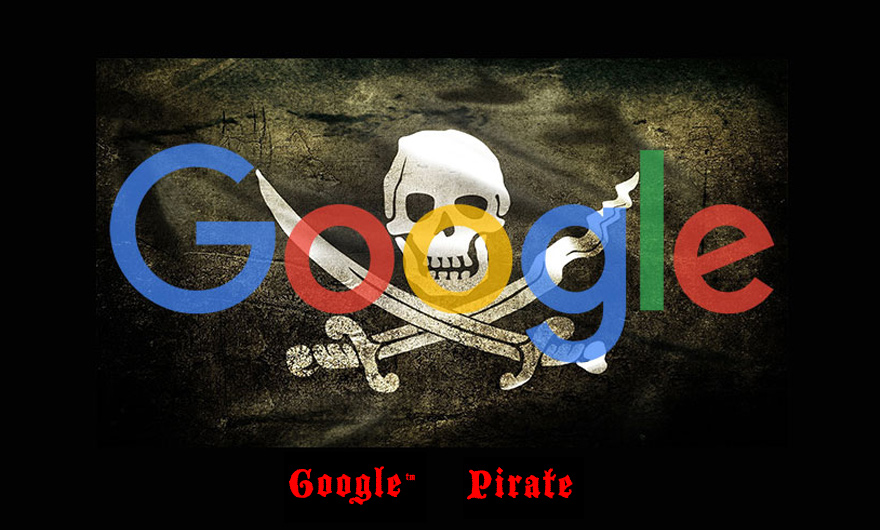In the past, it has happened to all of us that when searching for content, we come across sites that offer content that is far from necessary and sometimes even unrelated to our search. This event, which was sometimes repeated many times, had a significant impact on the user’s dissatisfaction and lack of trust and confidence in the site and its content. This article examines Google’s pirate algorithm, which is a way to prevent such cases.
Another thing that reduced Google search engine satisfaction with the site was viewing a site with duplicate content and so-called duplicate content, which is contrary to copyright law. For this purpose, Google search engine introduced an algorithm called Pirate Algorithm.
Copyright law

The law was introduced under the title DMCA, which stands for Digital Millennium Copyright Act. The law was approved and registered by the then President of the United States in 1988, and then a unit at Google called DMCA was launched in 2012 to review the printing law.
Protection of copyright law
Every content creator has the right to publish his / her written content under his / her name and upload it on the site, but before introducing and starting the pirate algorithm, the results of the sites that sell and especially provide software The difference was due to the activities of profiteers who provided software to the user at a very low or free price, and of course in the first results of Google and above the main site of the software provider.
The number of complaints from site owners to Google had increased to such an extent that Google was not able to review the sites quickly and immediately, but after the pirate activity, the ranking results of the sites changed and changed.
Important factor in the search for content by the algorithm pirate, is the time of publication .
The method of examining Google’s pirate algorithm is that the site that published the article earlier recognizes it as the owner and creator of the content and shows the position of that site in its results, higher.
That is why in SEO and site optimization, there is always an emphasis on producing specific content. When you offer your special product or service and produce content based on it, you get a good position based on the pirate algorithm, which can increase your site’s Google traffic and site traffic. Increase sharply.
Ability to report copied content to Google DMCA
- If you see content from your site pages on another site, enter this address,which is the DMCA service counter.
- Enter your details and select your country.
- Enter your report that reports the text copied from your site.
- In the next section, enter the URL of the pages whose content has been copied.
- URLs of site pages or other sites that have copied your content.
Google will check the submitted report and check the pages of the wrong site and remove the URL of the page that has copied content, which will result in deleting the URL, reducing the site ranking
When did the pirate algorithm enter Google?
In the past, the number of copies of content by users and even site administrators from sites without referring to the site and the main source became so high and widespread, that it seems that the copyright law had officially expired and large business owners were to blame for multiple copies Google is known for not dealing with this problem.
The algorithm was first introduced as the Emanuel Update, but one of the most influential Bollywood actor, Ari Emanuel, called Google a pirate, and then Google called the algorithm a pirate.
The pirate algorithm was officially announced in 2012 and started operating, and the update of this algorithm was applied in 2014.
The main task of this algorithm is to identify and deal with sites that publish duplicate content. This algorithm does not focus only on textual content. It examines video and video content and even products. Because, as discussed in previous articles on the Panda algorithm, the Panda algorithm focuses on content. But the pirate algorithm scrutinizes non-commercial sites such as system software.

How the pirate algorithm works
The pirate algorithm does not immediately penalize the site by viewing duplicate content. Rather, it is the first site that produces and publishes the content and examines the time of publication and ranks the main site and is displayed in the first results. It then reduces the rank of the offending site. In fact, it should be said that the study and performance of the pirate algorithm is directly related to the following:
- Credibility and number of inbound links to the site
- Site date and history
- Time to publish content on the site
The difference between a panda algorithm and a pirate algorithm
My opinion is always that those who are looking for content with a unique and somewhat specialized and scientific title have a little knowledge about the information they are looking for. So I need to continue the article a little more specialized by comparing the performance of the two algorithms Panda and Pirate:
Both Panda and Pirate algorithms detect duplicate content, so why were both algorithms designed and implemented?
In the world of the Internet, sites that are cowardly copying have several models of behavior. Including:
- Sites that copy all the text and content of the site from another source.
- Sites that copy all site content from multiple sources and other sites.
- Sites that only some parts of the site have been copied.
- A site that has copied only a few sentences.
The difference between a panda and a pirate algorithm is clear here. The pirate algorithm identifies the first three, and the panda algorithm identifies the fourth, which copies just a few sentences from another source.
The goal of both algorithms is for the user to receive useful, new and useful content and actually stay on the site that has benefited and valued him.
Protect yourself from the pirate algorithm with the following methods
Google News has been reporting for some time that content is king. But in Google’s new news, a phrase was seen in the news: Content GOD
Then:
Be the creator of the content
If you are familiar with Google search engine algorithms, you have noticed that the main focus of algorithms is on the content of the site and the use of any duplicate content will result in a penalty or at least a drop in site ranking. To eliminate and prevent this from happening, be the creator of the content of your site and produce new and attractive content, and if you do not have enough ability and creativity, leave it to the company and individuals producing content.
At least link and mention the source and reference of the content
It is inevitable that sometimes due to updates and new news that we encounter on other sites and sources, we have to use video, images or sentences and phrases from other sites and sources. The reason for my personal use and experience is the use and expression of someone or another site solely to emphasize the importance, and credibility of the content and gain more user confidence in the content of the site.
If you use phrases and images from other sources, the best way to stay safe from Google search engine algorithms is to cite a credible and documented source and reference, so as not to be added to sites that will soon face fines or downgrade.
Introducing and registering new content using the Google Console Search Tool
The importance of using this method is that the pages are indexed faster with new content and the Google robot checks the content of the new page. To do this, use the following method:
- Enter the search console site.
- Click on the URL Inspection option and enter the URL of the page with the new content.
- Click on Request Indexing to confirm that indexed content is not indexed.







Leave feedback about this
You must be logged in to post a comment.